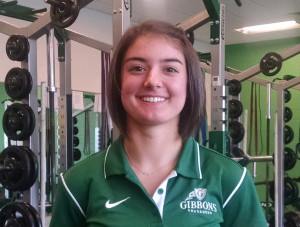
I have a confession to make: I have always thought that planning, programming, and periodization were synonymous terms. I have a feeling I am not the only coach who has confused these terms, and it is understanding the distinctions between them that will make us more effective planners for our athletes.
Planning is “the process of arranging a training program into long and short phases in order to achieve training goals” (Bompa, 88)
Programming is filling in the plan structure with content, such as training modalities.
Periodization is a description of how we plan; the structure and content of the annual plan and its changes over time.
To put it simply, planning is the framework, programming is the details, and periodization is the big picture.
Periodization is used as a method in planning and programming. Bompa describes two types of periodization: that of the annual plan, and that of biomotor abilities. Periodization of the annual plan is the ultimate big picture; it breaks down the plan into phases, subphases, macrocycles, microcycles, and training units. There are three phases of training: preparation, competition, and transition. Depending on how many competition phases are in the year, the annual plan can be labeled as mono-cyclical, bi-cyclical, or tri-cyclical. Each phase can be divided into subphases including general preparation, specific preparation, precompetition, competition, and transition. Each subphase is made up of any number of macrocycles all geared toward the same training direction. Bompa uses the term macrocycle and most coaches are used to using the term “mesocycle;” it is a group of microcycles with the same training direction and can last anywhere from 2-6 weeks. The macrocycles are determined by the phase and subphase they are under. For example, one could have an unloading macrocycle under the precompetition subphase, which would be under the competition phase. Microcycles are sequences of training units that follow the goals of the macrocycle, and are most commonly represented as a week’s worth of workouts. Each individual workout is called a training unit.
Periodization of biomotor abilities looks at the integration, development, specificity, and load progression of strength, speed, and endurance. Biomotor abilities can be integrated in a complex or sequential manner. In complex, all three aspects are trained simultaneously throughout the year; whereas in sequential, the year is broken up into blocks where one biomotor ability is focused on per block. There is a risk of detraining one ability while focusing on the others in sequential integration. Bompa suggests looking at the two major biomotor abilities of your athletes’ sports and honing in on those in the same block with different emphases as needed.

Development addresses how we want each biomotor ability to progress throughout the year. Planning for development looks back at the phases of strength development in chapter two, and organizes them into a pattern that is complex, sequential, or pendular. Complex development has training units that train two aspects of a biomotor ability in one session (ex. maximum strength and power together). Sequential involves planning for training through the indicated phases in order (ex. anatomical adaptation, then maximum strength, then power). Pendular alternates between two qualities of a biomotor ability in each macrocycle (ex. maximum strength macrocycle followed by power macrocycle, followed by another maximum strength macrocycle, etc.).
The principle of specificity also has a complex and a sequential approach; although instead of looking at the greater biomotor abilities, it applies to the general and specific training means at moderate and high intensities. The choice is between training general and specific skills simultaneously (complex), or training general skills to work up to specific skills (sequential). Finally, load progression is considered on both a macro- and micro-cycle level. The key here is undulation: varying the load to avoid plateaus and detraining during competition.
With Coach Morland, we often undulate programming on both the macro- and micro- levels; for example, we will program a “heavy week” (macrocycle) of 80-90% and when we repeat exercises over the week (microcycle) one day will be 80% and the other will be 85-90%.
-
How does your planning and programming for your athletes compare to what Bompa offers in this chapter?
-
How will you incorporate these new principles of periodization to optimize your athletes’ performance?
We would love to hear from you in our comments; happy (periodized) planning!
Erin Blaser, NASM CPT
GWU SMHS DPT Class of 2020
NASM Certified Personal Trainer
“The views, opinions, and judgments expressed in this message are solely those of the authors and peer reviewers. This content has been reviewed by a team of contributors but not approved by any other outside entity including the Roman Catholic Diocese of Raleigh.”



